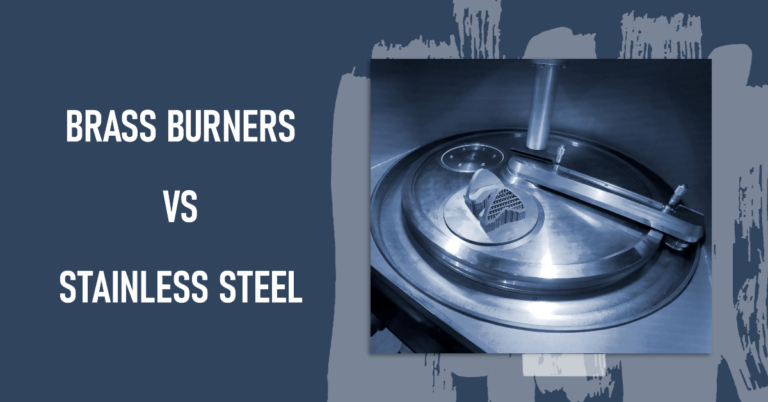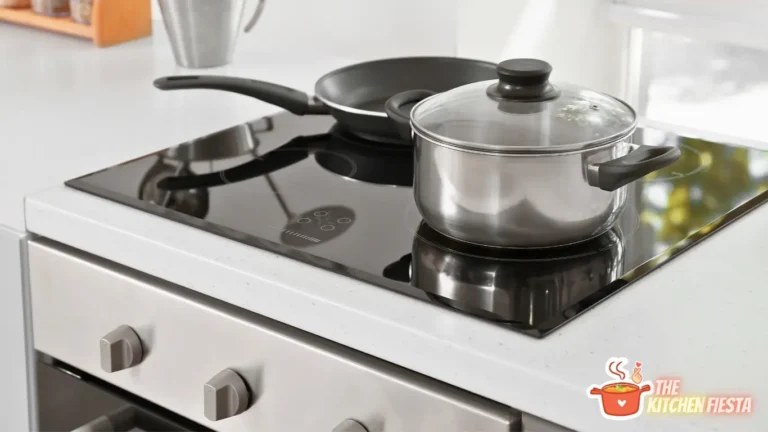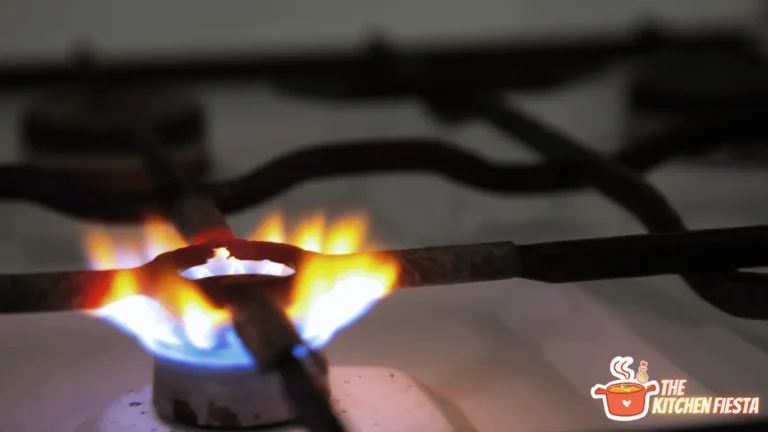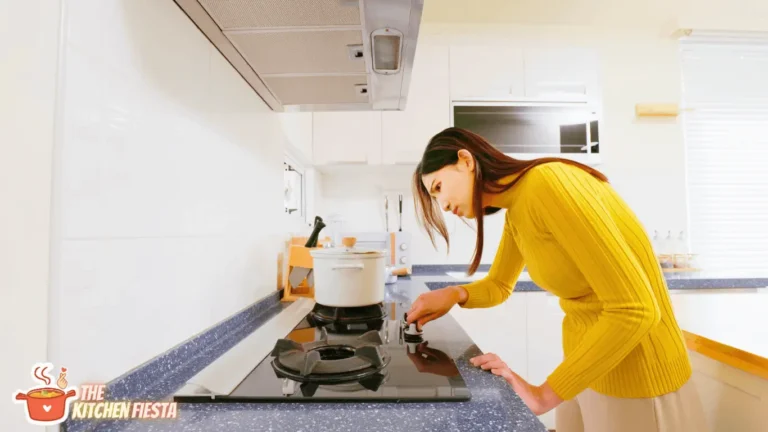How to Install a Gas Stove without a Gas Line: A Step-by-Step Guide
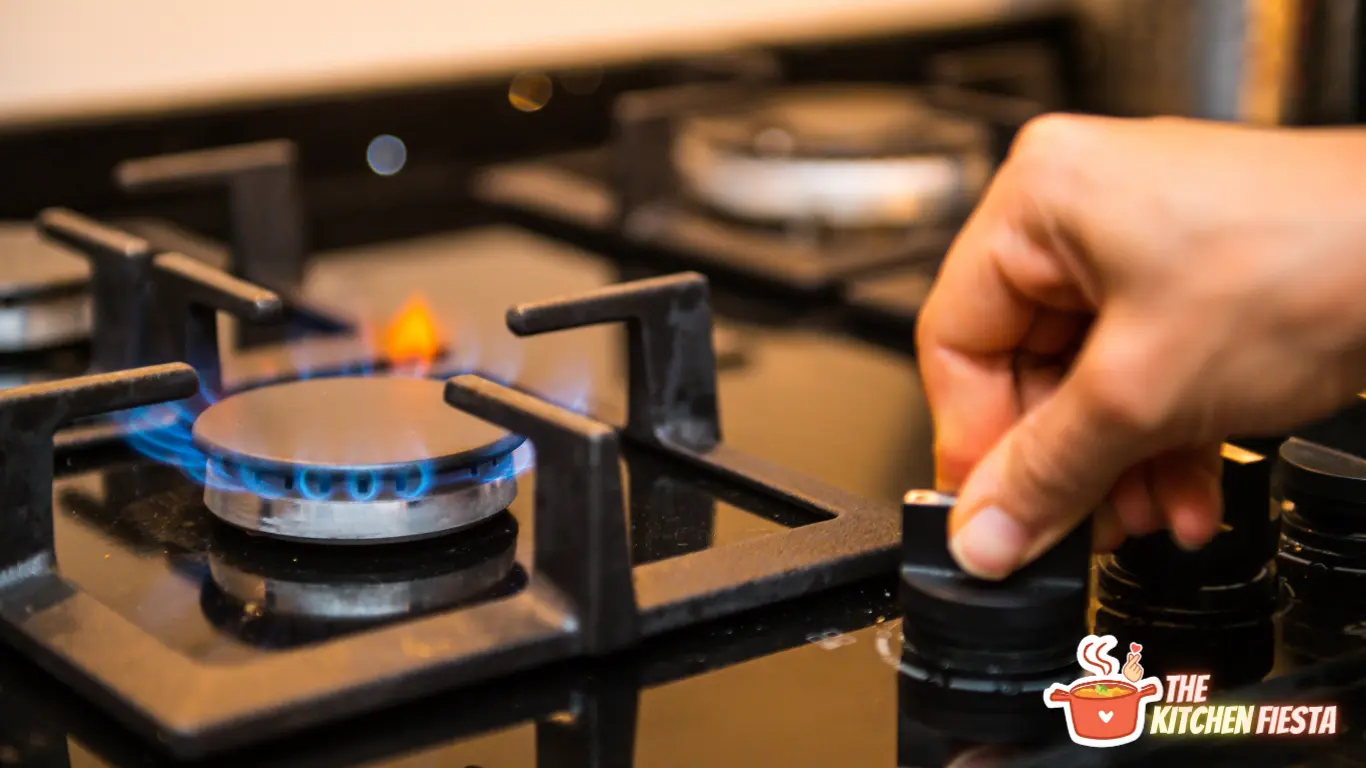
Installing a gas stove without a gas line can seem daunting, but it can be done safely and efficiently with the right tools and knowledge. Many homeowners may still need a gas line in their kitchen but prefer the convenience and precision of cooking with gas. This article will explore the steps necessary to install a gas stove without a gas line, ensuring a smooth and successful installation process.
The first step in installing a gas stove without a gas line is to determine the appropriate location for the stove. Choosing a place close to a natural gas source, such as a propane tank, is important to ensure the stove can be connected safely and effectively. Once the location has been chosen, the next step is to acquire the necessary tools and materials for the installation process. This may include a gas line, a regulator, and a flexible gas line connector, among other items. With these tools in hand, the installation process can begin.
Understanding Gas Stoves
Gas stoves are popular for many homeowners because they provide instant heat and precise temperature control. They are also more energy-efficient than electric stoves, making them a cost-effective option in the long run. However, installing a gas stove without a gas line can be challenging.
Before installing a gas stove, it is important to understand the different types of gas stoves available. There are two main types of gas stoves: freestanding and slide-in. Freestanding gas stoves are self-contained units that can be placed anywhere in the kitchen. Slide-in gas stoves are designed to fit into a specific space in the kitchen and have a built-in backsplash.
When installing a gas stove without a gas line, it is important to consider the location of the stove. The stove should be placed near a window or vent for proper ventilation. It is also important to ensure that there is enough space around the stove to prevent any accidents.
Another important consideration when installing a gas stove without a gas line is the type of fuel that will be used. There are two main types of fuels for gas stoves: natural gas and propane. Natural gas is a common fuel source for gas stoves and is typically supplied through a gas line. On the other hand, propane is a portable fuel source that can be stored in a tank and used to power gas stoves.
Propane is often the preferred fuel source when installing a gas stove without a gas line. Propane tanks are readily available and can be easily refilled when empty. However, ensuring that the propane tank is stored safely and all connections are properly secured is important.
Why You Might Not Have a Gas Line?
For several reasons, someone might need a gas line in their home. Some homes may not have access to natural gas, while others may have access but choose not to use it. Here are a few common reasons why someone might not have a gas line:
1. Location
Homes in rural areas may need access to natural gas lines, making it difficult or impossible to install a gas stove. In these cases, homeowners may need to consider alternative options, such as propane or electric stoves.
2. Cost
Installing a gas line can be expensive, especially if the home still needs one. In addition to the cost of the gas line installation itself, homeowners may also need to pay for permits and inspections, which can add to the overall cost.
3. Personal Preference
Some homeowners prefer electric stoves over gas stoves and may choose not to install a gas line. Electric stoves can sometimes be more convenient, as they do not require a gas line or a pilot light.
4. Safety Concerns
Gas stoves can be dangerous if installed properly, and some homeowners may choose to avoid installing a gas line out of concern for their safety. In these cases, it is important to consult a professional to ensure the installation is done correctly and safely.
Alternatives to Traditional Gas Lines
When installing a gas stove without a gas line, a few alternatives exist. Here are two popular options:
Propane Tanks
Propane tanks are a common alternative to traditional gas lines. They are typically used in outdoor settings, such as for grilling or camping, but they can also be used indoors. Propane tanks are portable and can be refilled or replaced as needed. They are usually available in various sizes, from small tanks that can be easily transported to larger tanks that can be used to power multiple appliances.
When using propane tanks indoors, it is important to follow safety guidelines. Propane tanks should be stored in a well-ventilated area, and all connections should be checked for leaks before use. It is also important to ensure the stove is compatible with propane before switching.
Natural Gas Containers
Another alternative to traditional gas lines is to use natural gas containers. These containers are similar to propane tanks but designed to hold natural gas instead. Like propane tanks, natural gas containers are portable and can be refilled or replaced.
When using natural gas containers indoors, it is important to follow safety guidelines. Natural gas containers should be stored in a well-ventilated area, and all connections should be checked for leaks before use. It is also important to ensure the stove is compatible with natural gas before switching.
Both propane tanks and natural gas containers can be effective alternatives to traditional gas lines. However, taking the necessary safety precautions and ensuring the stove is compatible with the chosen choice before making any changes is important.
Safety Precautions
When installing a gas stove without a gas line, it is important to take the necessary safety precautions to avoid any potential hazards. Here are some safety tips to keep in mind:
- Ventilation: Proper ventilation is essential when using a gas stove. Ensure the area around the furnace is well-ventilated to prevent any gas buildup that could lead to an explosion or fire.
- Gas Leak Detection: Before installing the gas stove, it is important to check for gas leaks. Use a gas leak detector to check for any leaks in the area. If a leak is detected, proceed with the installation once the leak has been fixed.
- Professional Installation: While installing a gas stove without a gas line is possible, it is recommended to have a professional do the installation. A professional installer will ensure the stove is properly installed and connected to the gas source.
- Use the Right Materials: When installing a gas stove, it is important to use the right materials. Use materials rated for gas use, such as gas-rated flexible hoses and fittings. Using the wrong materials can lead to leaks and other hazards.
- Read the Manual: Read the manufacturer’s manual before installing the gas stove. The manual will provide specific instructions for installation and safety precautions.
Tools and Materials Needed
Before starting the gas stove installation process, gathering all the required tools and materials is essential. Here are the things that one needs to have:
Tools
- Adjustable wrench
- Pipe cutter
- Teflon tape
- Drill
- Screwdriver
- Level
Materials
- Gas stove
- Flexible gas line
- Gas valve
- Gas leak detector solution
- Pipe thread sealant
It’s important to ensure that all the tools and materials are of good quality and meet safety standards. A flexible gas line is a must-have as it allows for easy installation and flexibility in any movement. The gas valve is also crucial as it controls the gas flow to the stove.
A pipe cutter is recommended to ensure a clean and precise cut during installation. Teflon tape and pipe thread sealant seal the connections and prevent gas leaks. A level is necessary to ensure the stove is installed correctly and balanced.
Lastly, it’s essential to have a gas leak detector solution to test for any gas leaks after the installation process. This is an important safety measure that should be noticed.
Step-by-Step Installation Guide
Gas stoves are an excellent addition to any kitchen, but what if you don’t have a gas line? Don’t worry; you can still enjoy the benefits of a gas stove by setting up an alternative gas source. Here is a step-by-step guide on installing a gas stove without a gas line.
1. Choosing the Right Location
The first step in installing a gas stove without a gas line is to choose the right location. The location should be near a window or an outside wall to allow proper ventilation. Also, ensure that the area is near an electrical outlet for the stove’s ignition system.
2. Setting Up the Alternative Gas Source
The next step is to set up an alternative gas source. The most common alternative gas sources are propane and natural gas. Propane is stored in tanks, while natural gas is delivered via a pipeline system. You can purchase a propane tank from a local supplier or rent one from a hardware store. If you choose to use natural gas, you must contact your local gas company to install a gas meter and run a gas line to your home.
3. Connecting the Stove to the Gas Source
Once you have set up the alternative gas source, it’s time to connect the stove to the gas source. Begin by attaching the flexible gas line to the stove’s gas inlet. Make sure to use a new gas line and follow the manufacturer’s instructions for installation. Then, connect the other end of the gas line to the propane tank or natural gas line. Use a gas line adapter if necessary.
4. Testing the Connection
After connecting the stove to the gas source, testing the connection is essential. Turn on the gas valve and ignite the stove’s burners. Check for any gas leaks by using a gas leak detector or soapy water. If you detect a gas leak, immediately turn off the gas valve and tighten the connections. Repeat the test until there are no gas leaks.
That’s it! Following these simple steps, you can install a gas stove without a gas line and enjoy all the benefits of cooking with gas.
Post-Installation Checks
After installing a gas stove without a gas line, it is essential to perform post-installation checks to ensure that the stove works correctly and safely. Here are some post-installation reviews that should be performed:
Check for Gas Leaks
The first and most crucial post-installation check is to ensure no gas leaks. Turn on the gas and check for any gas smell or hissing sound. If you detect any gas smell or hear a hissing sound, turn off the gas immediately and call a professional to fix the issue.
Check the Gas Pressure
Ensure that the gas pressure is within the recommended range. You can check the gas pressure using a gas pressure gauge. If the gas pressure is too high or too low, it can affect the stove’s performance and cause safety issues.
Check the Burners
Check all the burners to ensure that they are working correctly. Turn on each burner and check the flame. The flame should be blue and steady. If the love is yellow or flickering, it indicates a problem with the burner.
Check the Oven
Turn on the oven and check the flame. The flame should be blue and steady. If the love is yellow or flickering, it indicates a problem with the stove.
Check the Ignition System
Check the ignition system to ensure that it is working correctly. Turn on each burner and oven to check if they light up perfectly. If the ignition system is not working correctly, it can cause safety issues.
Post-installation checks can help ensure the gas stove is working correctly and safely. If you encounter any issues during the post-installation statements, you must call a professional to fix the problem.
Maintenance Tips
Maintaining a gas stove is essential to ensure its longevity and safe operation. Here are some tips to keep your gas stove in good condition:
- Clean the burners regularly: Remove the grates, caps, and burners and clean them with soap and water. Use a soft brush or sponge to scrub away any dirt or debris. Make sure to dry the burners thoroughly before replacing them.
- Check the gas connections: Inspect the gas connections for any leaks or damage. If you notice any issues, turn off the gas supply immediately and call a professional to fix it.
- Clean the oven: Use mild detergent and warm water to clean the inside of the oven. Avoid harsh chemicals or abrasive cleaners that can damage the oven’s surface.
- Replace the stove grates: Over time, the stove grates can become worn or damaged. Replace them if you notice any cracks or chips.
- Check the igniter: If your gas stove has an electronic igniter, ensure it is clean and debris-free. If it is not working correctly, it may need to be replaced.
- Clean the control knobs: Use a soft cloth and warm, soapy water to clean the power knobs. Avoid using abrasive cleaners that can damage the knobs.
Conclusion
Installing a gas stove without a gas line can be challenging, but it is possible with the right tools and knowledge. The first step is to determine the type of gas stove that will be installed, whether it is a propane or natural gas stove. Propane stoves require an outdoor propane tank, while natural gas stoves require a gas line hookup.
Once the type of stove is determined, the next step is to gather the necessary tools and materials, including a gas stove connector, yellow Teflon pipe-joint tape, wrench, gas leak detector, or liquid soap. It is important to purchase a new gas stove connector and not reuse an old one to ensure safety during installation.
When installing a gas stove, following the manufacturer’s instructions is crucial. This includes measuring the dimensions of the appliance and the cutout space to ensure a proper fit. It is also important to shut off the gas valve and disconnect the old stove before installing the new one.
Finally, after the installation is complete, it is essential to test for gas leaks. This can be done using a gas leak detector or liquid soap. If there are any signs of a gas leak, a professional should redone or inspect the installation.
Overall, installing a gas stove without a gas line requires careful planning, attention to detail, and adherence to safety guidelines. With the right tools and knowledge, installing a gas stove safely and efficiently is possible.
Frequently Asked Questions
What are the alternatives to installing a gas line for a gas stove?
If you don’t have a gas line in your home, you can still use a gas stove by installing a propane tank. Propane tanks are a common alternative to gas lines. They are often used in rural areas where gas lines are not available.
Can a gas stove be converted to propane?
Yes, a gas stove can be converted to propane. However, it is important to note that not all gas stoves can be restored. Before attempting to convert a gas stove, it is recommended to check the manufacturer’s instructions or consult a professional.
What is the cost of hiring a professional to install a gas line for a gas stove?
The cost of hiring a professional to install a gas line for a gas stove can vary depending on the location, the complexity of the installation, and the professional’s rates. On average, the cost can range from $500 to $2,000.
Is it possible to install a gas stove without professional help?
Installing a gas stove without professional help is possible, but it is not recommended. Installing a gas stove involves working with gas lines and requires knowledge of plumbing and electrical work. Ensuring the installation is done correctly is important to prevent gas leaks and other hazards.
What are the safety precautions to take when installing a gas stove?
When installing a gas stove, following safety precautions to prevent gas leaks and other hazards is important. These precautions include turning off the gas supply, ensuring proper ventilation, using the correct connectors and fittings, and testing for gas leaks.
What is the process of installing a gas stove with a propane tank?
Installing a gas stove with a propane tank involves connecting the stove to the propane tank using a gas line and a regulator. It is important to ensure that the connections are secure and that the propane tank is in a well-ventilated area. Additionally, it is recommended to have the installation done by a professional to ensure it is done correctly and safely.


